Every collection is unique. The Anderson Archival team is comprised of history and digitization enthusiasts who love a good process, thrive on curveballs, and take joy in building something from the ground up.
When Anderson Archival launched as a division of Anderson Technologies, one of the first discussions we had in-house was the need for a demo collection—one that would showcase many aspects of the work included in the standard Anderson Archival digitization process.
The Collection
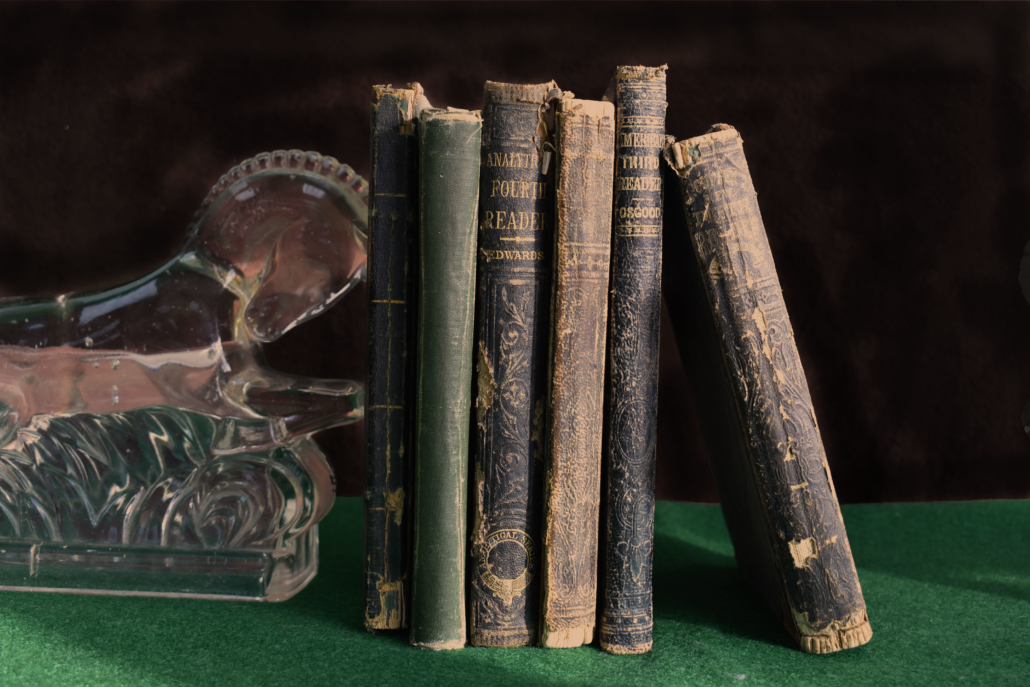
We decided the collection would have four sections: children’s literature, schoolbooks, an in-depth non-fiction series, and classic novels. All materials were purchased for the sole purpose of digitization in this collection. Dates of publication range from 1831 (Cobb’s Juvenile Reader, No. 2; Containing Historical, Moral, and Instructive Reading Lessons) to 1918 (Pride and Prejudice by Jane Austen).
Just like any collection brought to us by a client, each book presented distinct challenges and the need to make choices essential to each book.
Arrival and Inspection
As each book arrived in-house, it underwent an initial inspection. We took careful notes describing damage, spine condition, loose and missing pages. Was color printing present on any pages? What about note-taking or scribbling by the previous owners? Which books would be suitable for a flatbed scanner, and which would need to be photographed or completely disbound?

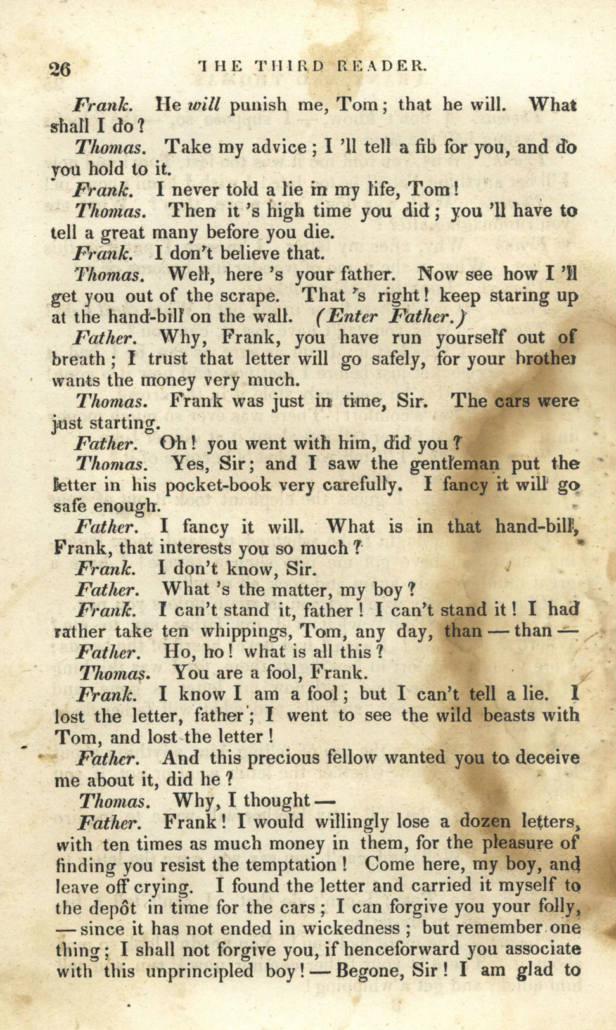
Because the bulk of this curated collection consisted of non-rare physical copies to showcase the digitization process rather than physical restoration, most of the demo collection went through the disbinding process, allowing for streamlined flatbed scanning.
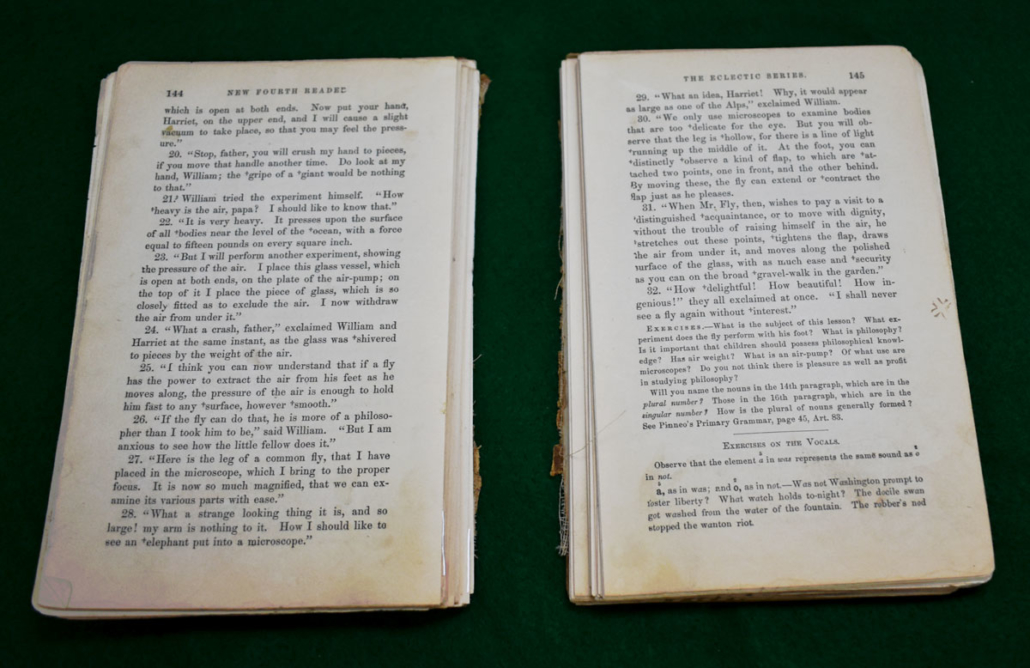
Scanning
The Anderson Archival approach to scanning is essential to an archival-quality project. Most scanning vendors “set it and forget it,” boasting page-per-second processing rates that mean walking away from equipment and missing problems until it is too late.
The most common method of scanning by other vendors is through an auto feeder. The Anderson team knows that even with a high-touch approach to scanning, pages become jammed or run through the feeder two or more at a time, resulting in missing images and, in worst case scenarios, incurring rips or other damages.
Even the Anderson approach can’t eliminate problems completely, but because of careful inspection, preparation, small batches, and close monitoring, issues are minimized and immediately resolved if they do occur.
Flatbed scanning is used for books that can’t be disbound but can lie flat without incurring damage to the spine, that have pages too fragile to go through a feeder, or fold-out accessories like maps larger than a feeder can process.
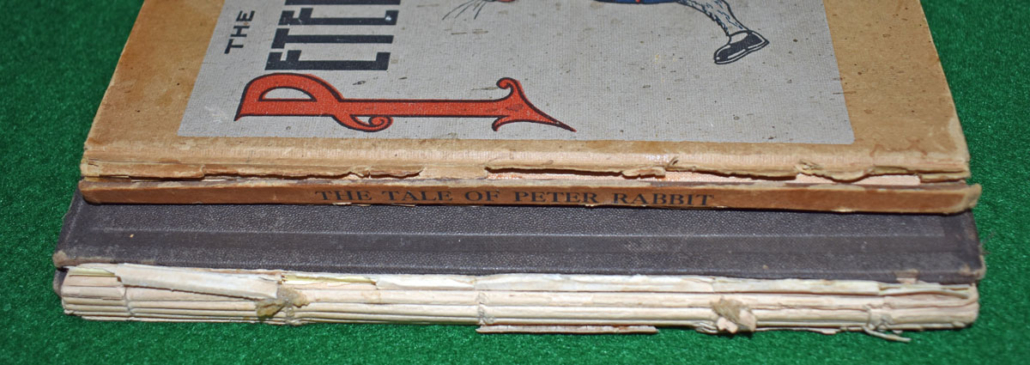
As a team, we ensure that the best image is captured the first time. The safest way to prevent damage is to reduce handling—and that includes handling during the digitization process.
For many valuable historical collections, disbinding or being pressed flat aren’t workable options. With this in mind, the team selected a few pieces in the collection to photograph in a book cradle.
This method allows for a book to be imaged without placing additional stress on the spine or the pages, preventing pressure damage, spine splitting, or bumps and tears from contact with equipment.
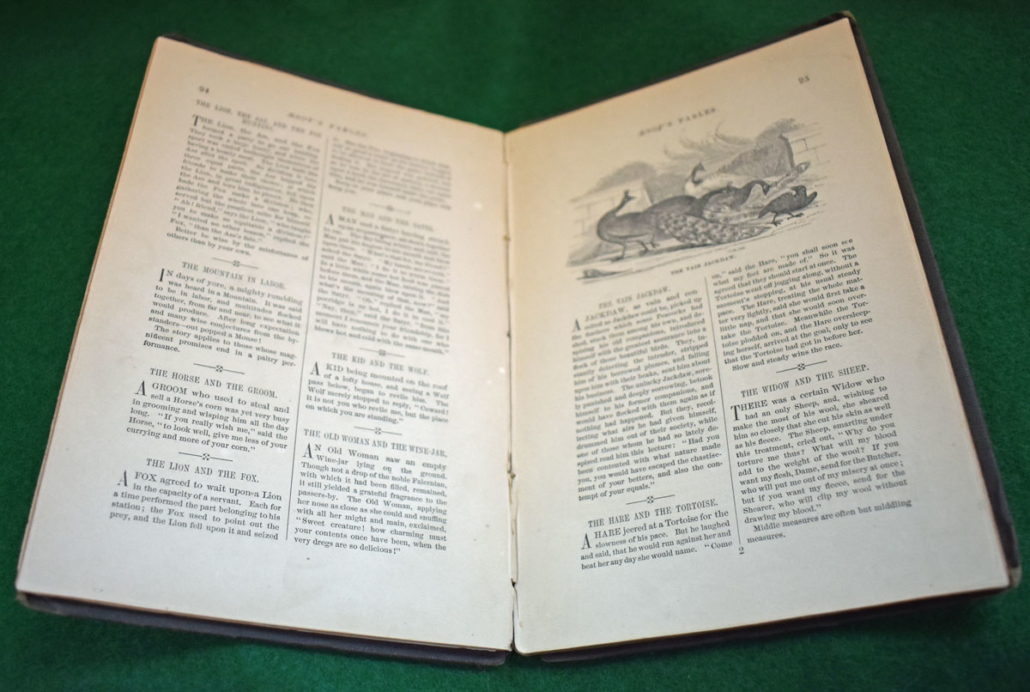
Another Inspection
With scanning and digital imaging completed, each book underwent yet another inspection. This time, the team checked to confirm every physical page appeared as a digital image file, and that no smudges, dust, or rips were introduced during the scanning process.
Returning to the questions asked upon initial inspection, the team discussed how best to showcase material with color art or extensive water damage. What would be standard operating procedure when the physical book was missing pages (include a placeholder), or when text was so obscured by printing ink, handwriting, and tears that the content could not be discerned (reference another copy of the work and re-build the type on the image)? This decision is typically based on discussions between Anderson Archival and the collection owner, based on the goals they have for the digital collection.
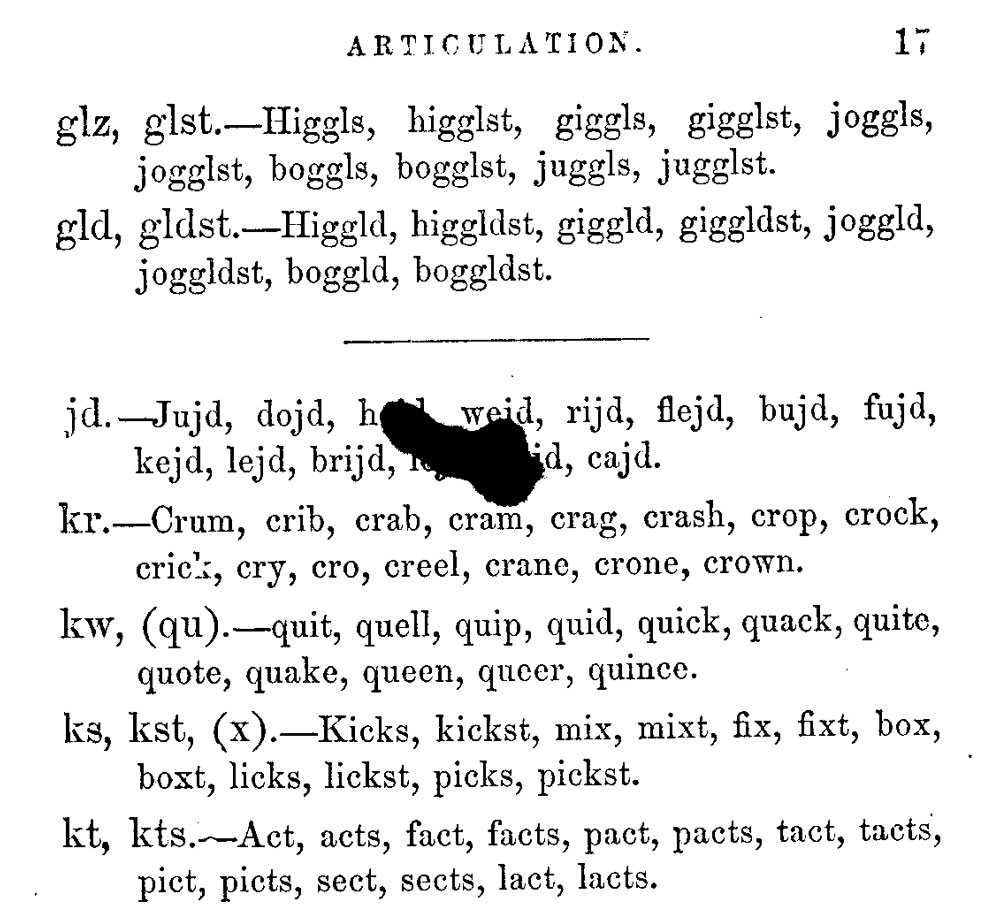

Each inspection—as with all the steps before it—helps pave a path forward and provides a peek into the final product.
What’s next for the demo collection? Image cleanup with detail-oriented quality assurance. We’ll go further through the Anderson Archival processes in Building a Demonstration Collection, Part 2. Keep an eye out for it!
In the meantime, if your collection deserves the high-touch, preservation and detail-focused work of the Anderson Archival team, please contact us today by phone at 314.259.1900 or by email at info@andersonarchival.com. We’ll provide a free consultation!


